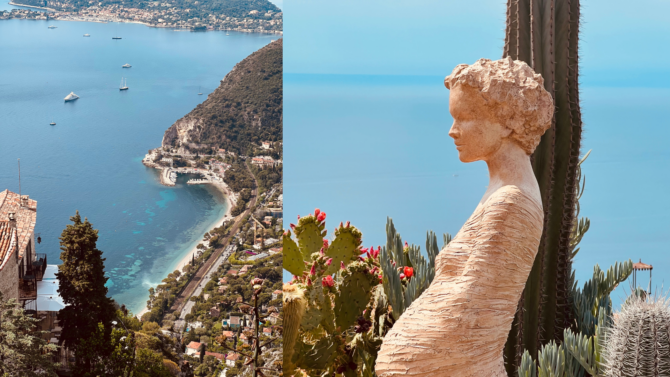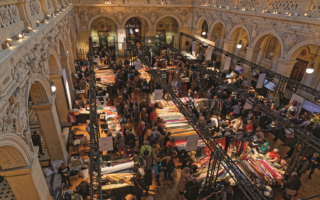The Enchanting village of Eze
Imagine yourself in an ethereal garden high up on a mountain top above the aqua waters of a Mediterranean Sea, where ambrosial flora sways at the feet of cherubic statues and a heavenly aroma of jasmine fills the air. This is the exotic garden of Eze – a most divine place perched in the hills above Monaco where a precipitous stone stairway leads you to these ‘Jardins Exotique’ – each step a step closer to the the most breathtaking views imaginable.
For an entry fee of seven euros, you are transported to another world with a vista that stretches from the peninsular of Saint-Jean-Cap-Ferrat, home of the sumptuous pink villa of Beatrice Ephrussi de Rothschild, past the harbour of Villefranche-sur-Mer, once used as an arsenal in the time of the Savoy family and now frequented by luxurious cruise ships, past the runways of Nice airport, with Cannes and Antibes beyond, all the way south to the majestic red mountains of the Esterel. It is quite simply the most impressive view I have ever seen as I pause for breath after the rigorous fifteen-minute climb from the Medieval village. An azure sky is reflected in the bay far below and I feel as though if I spread my arms out wide, I just might fly!
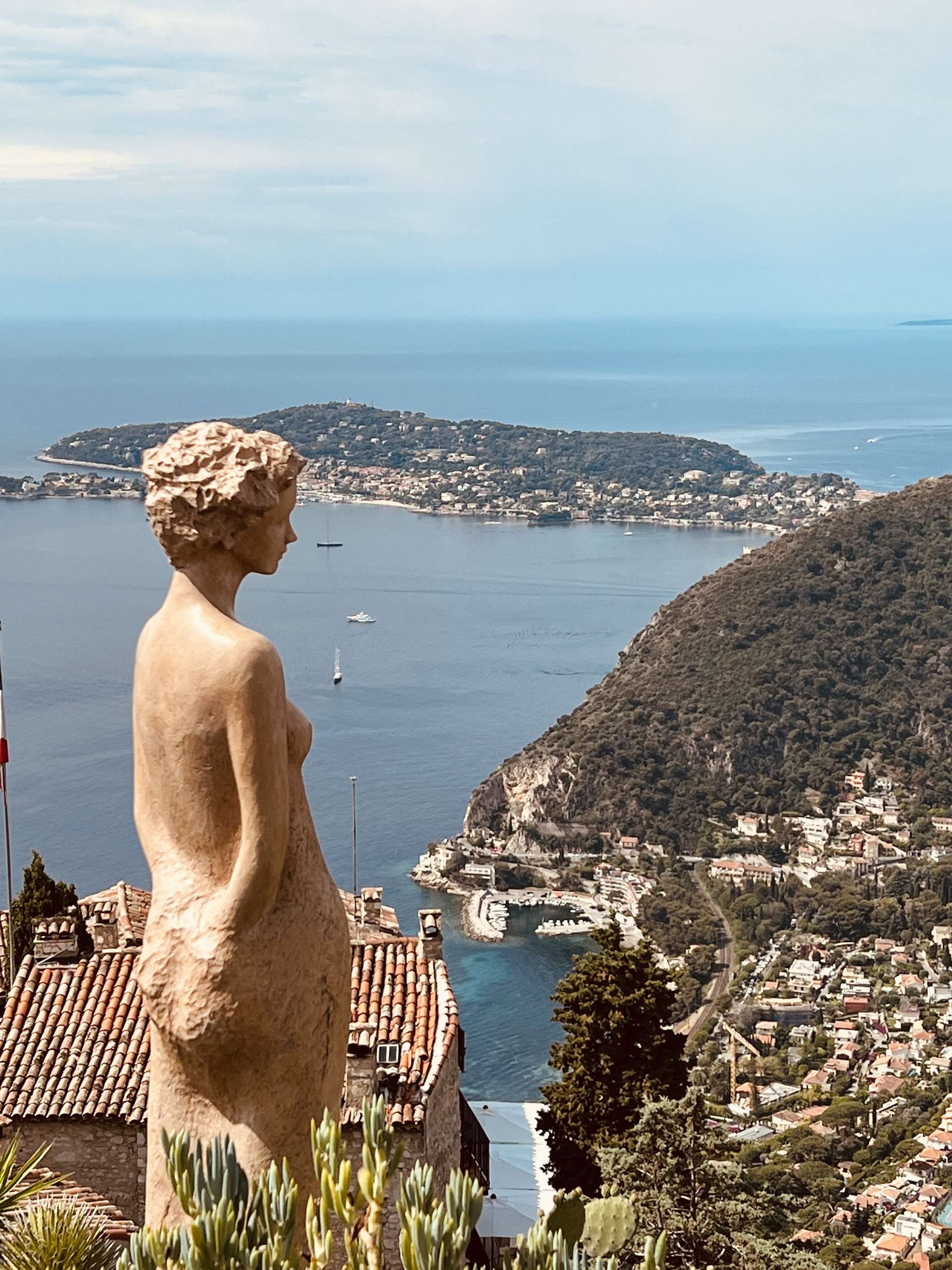
Photo: Gillie Hutchinson
This alluring landscape of Eze has long inspired writers and painters. The philosopher Frederich Nietzsche found inspiration in his famous ‘Thus spoke Zaranthustra‘ by climbing the steep mountain path that now bears his name. In 1868, the French novelist George Sand proclaimed “it is a most breathtaking road landscape, the most accomplished, a state of the art achievement”. French photographer Pierre Brassai (‘Paris By Night’ published in 2018) lived in Eze in later life and was associated with such artists as Picasso, who lived in nearby Mougins, as well as Salvador Dali and the writer Henry Miller. Film buffs may recognize the local scenery from films such as Hitchcock’s ‘To Catch a Thief’ starring Cary Grant and Grace Kelly. Royalty and VIP’s from around the world have stayed in Eze – its prestigious hotels ‘Chateau de la Chèvre d’Or’ and ‘Chateau Eza’ commanding prime hilltop locations.
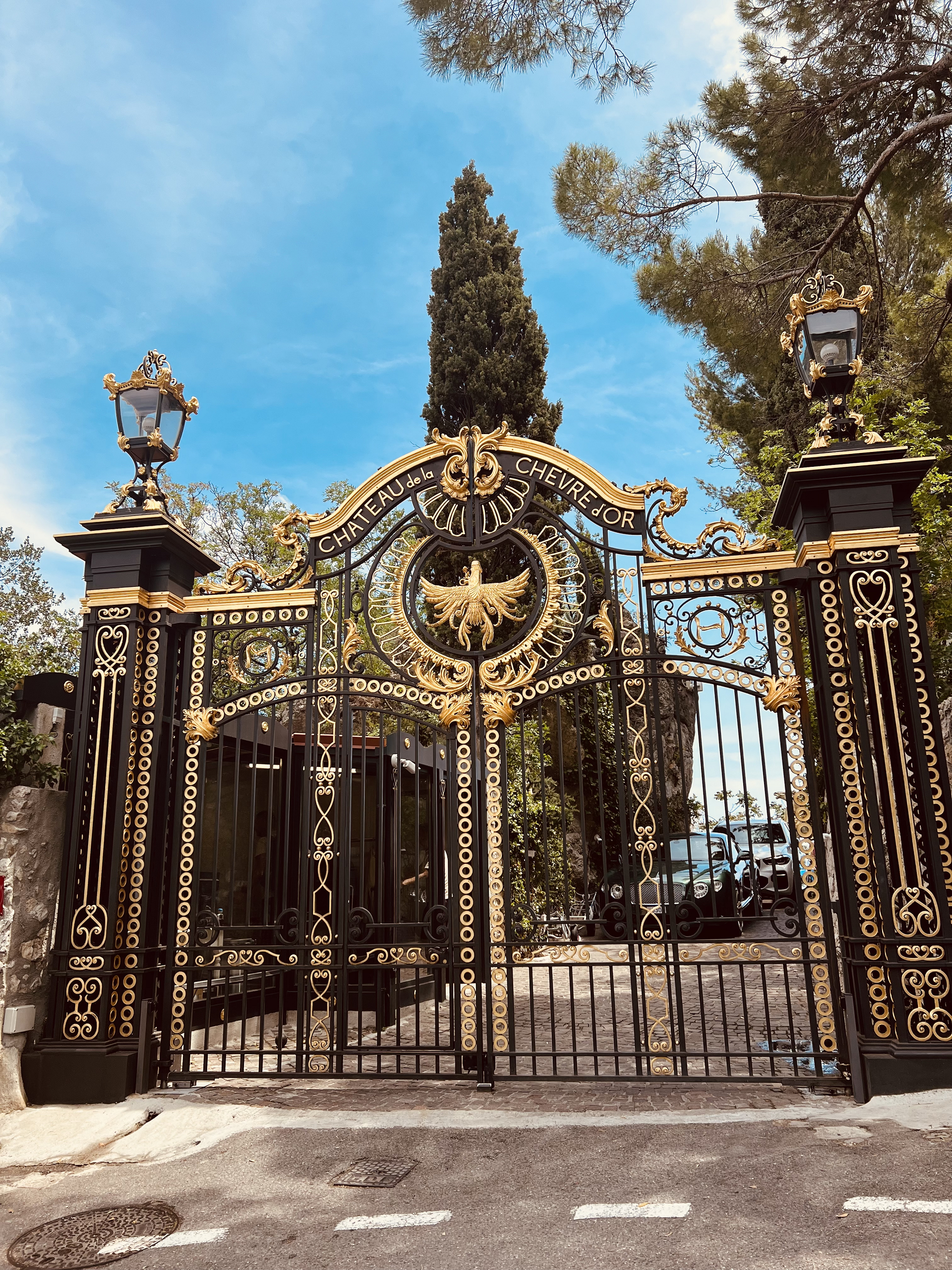
Eze Tropical Gardens, Photo: Gillie Hutchinson
From the gardens I survey the layers of terracotta-tiled rooves of Eze village below, its narrow cobbled streets designed to preserve shaded areas to help withstand the summer heat. During the 12th Century, houses were originally built with a type of limestone called ‘la Turbie’ extracted from the quarries in St. Lawrence d’Eze and transported back by mule. Mules, along with goats and sheep were kept on the ground floor of the houses while inhabitants lived on the floors above. Certain houses were built on the remains of ‘castelleras’ – ancient fortified walls dating back to the Iron Age, where blocks of stones were assembled without mortar. In 1706, during the War of the Spanish Succession, King Louis XIV of France ordered the destruction of the medieval fortress because of its vantage point.
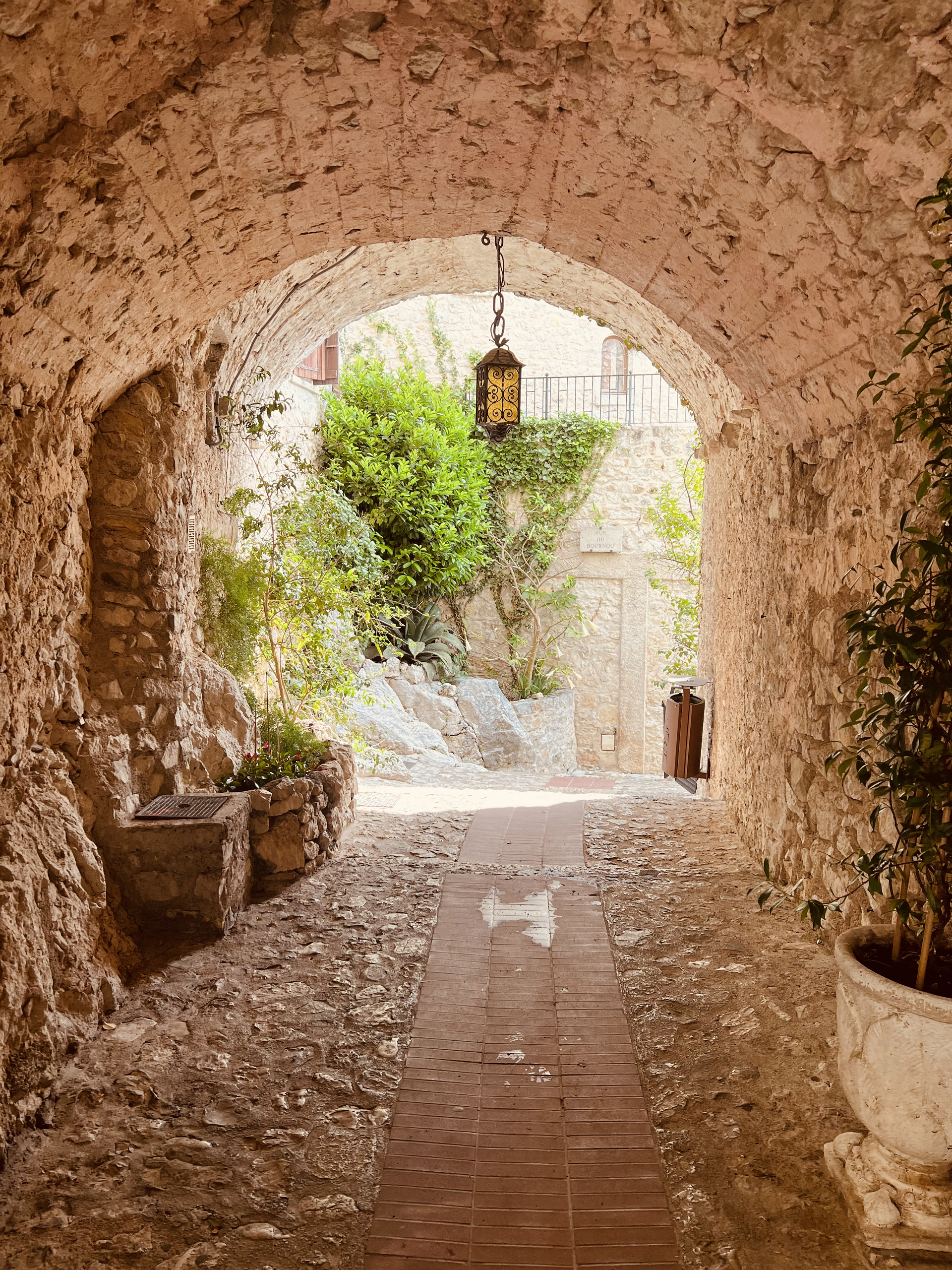
Eze Tropical Gardens-3. Photo: Gillie Hutchinson
I meander past multiple sized cacti and succulent plants, giant Agave and Aloe, past ‘Earth Goddesses’ (#14 on the map) – white life-size statues by Jean-Philippe Richard which seem to peer out at the view, and arrive before a large sign displaying the twenty different sites and views. I decide to make my way up to the ‘#15 – A Balcony over the Azur’ at the height of the gardens. A host of photographs later, I slowly descend to the Mediterranean Garden, beckoned by the relaxing sounds of its cascading water fountain, ‘#20 – A Most Precious Treasure’, and rest on a reclined wooden bench in the ‘Espaces Contemplatifs’ (‘Areas of Contemplation’). From here I can look across at the ‘#19 – Chateau Eza’ with its Moorish doorway as lunch guests begin to mingle on the balcony, seemingly suspended over the expansive valley below. The sights, sounds and smells of the gardens are indeed restorative and almost euphoric as I gradually wind my way back along the pathways towards the entrance.
Just outside the gardens is a quaint, terraced restaurant called ‘Le Nid d’Aigle’ (The Eagle’s Nest) (Tel:+33 (0) 44.93.41.19.08) – also the name given to Eze due to its hilltop position – where I stop for lunch. The restaurant offers some welcome shade while a friendly waitress brings ice cubes with my glass of Rose wine as I enquire after ‘Le Plat du Jour’, often the best value!
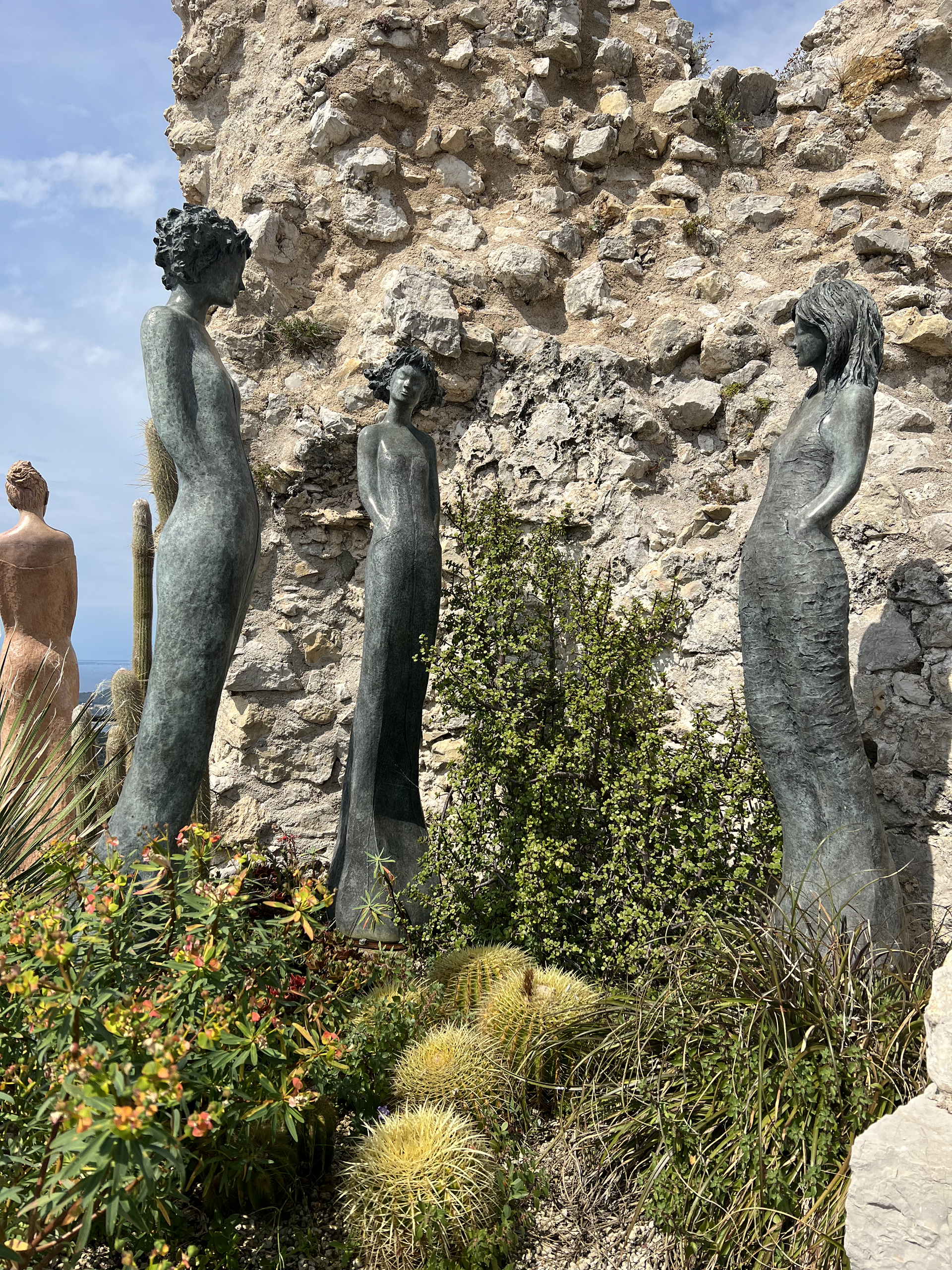
Photo: Gillie Hutchinson
After lunch, I follow the stone steps down through the village, stopping to browse the boutiques selling pretty cotton dresses, jewelry, straw bags and work by local artisans. I eventually arrive at ‘#10 – L’Eglise de Notre Dame de l’Assomption’, the ancient church of Eze. I light a candle and in the quiet of the church, I wonder at the number of souls who have trodden this path before me and marvelled at such a remarkable place.
GALLERY:Please add some images
A unique blend of legal, financial and tax advice along with in-depth property guides, inspirational real life stories, the best properties on the market, entertaining permanent pages and the latest property news and market reports make French Property News magazine a must-buy publication for anyone serious about buying and owning a property in France.
Lead photo credit : Eze Tropical Gardens, Photo: Gillie Hutchinson
Share to: Facebook Twitter LinkedIn Email
More in picturesque towns, Provence-Alps Cote d'Azur, Travel
